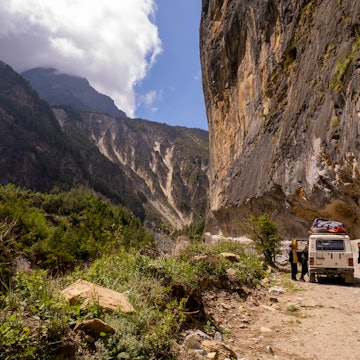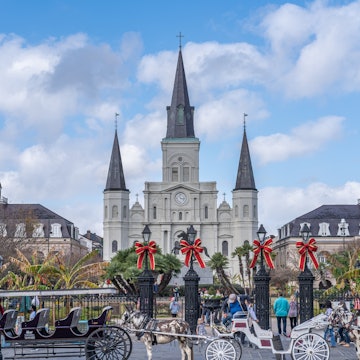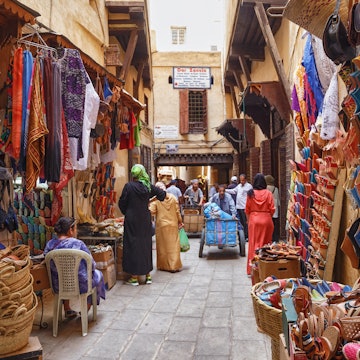

When Jacques Cousteau puts a dive site on his Top Ten list, then you know it must be good. That’s what I was reminding myself as I descended along a wall into the depths of the Great Blue Hole, a World Heritage Site off the coast of Belize.

So far, it was dark.
But suddenly, the wall gave way to a cavern. I peered through the gloom to discern massive limestone columns suspended from the ceiling of the cave. This eerie, upside-down forest resembled nothing I had ever seen above or below the surface of the ocean. That’s what motivates divers to cross the 70km from the Belize mainland to the Blue Hole: the chance to experience the other-worldliness of our amazing earth.
Snorkeling the Blue Hole

The Great Blue Hole is basically a giant sinkhole—a vertical cave—in the middle of Light House Reef Atoll. The near perfect circle is almost 1000 feet across, so while you can get a vague idea of its outline from the edge, it’s more easily visible from the air. The hole is about 400 feet deep and this depth contributes to its rich, indigo hue, which contrasts so dramatically with the surrounding turquoise waters.
Our sea captain Pablo motored the launch and dropped us off at the edge of the hole. To one side was the reef, teeming with sea life; to the other side was a seemingly infinite abyss of dark, blue nothingness.
As we swam around the inner rim of the sinkhole, it was easy to get engrossed in the comings and goings of the reef fish – dazzling trigger fish and graceful angel fish, shy squirrel fish and friendly grouper, schools of countless blue tang, inviting taggers-on. More than once, I forgot the dramatic drop-off behind and below me.
Diving the Blue Hole

Several days later, I was headed back to the Great Blue Hole to move beyond the reef along the rim and explore its more mysterious depths. On the way, our dive guide Anna recounted the history of this iconic site, which originated as a limestone cave during the last ice age. When the temperatures warmed and sea levels began to rise, the cave flooded and eventually collapsed, creating what is believed to be the largest submarine sinkhole in the world. The appeal, Anna reminded us, is not the sea life, which is sparse and difficult to see in the dark; rather, the cave system contains fascinating geological formations that are unlike anything you’ll see anywhere else.
No other boats were in sight when we motored through the cut in the reef and anchored at the southern mooring. Our group of seven donned our gear and descended. The first stop was a sandy ledge, which sloped down from about 18 to 50 feet. Then we dropped off the ledge and into the blue abyss.
I concentrated on equalizing, which always seems to require more time and effort from me than from my fellow divers, so I did not see much as we descended. But actually, there’s not much to see at this point in the dive except the limestone wall, stretching down, down, down, and out of sight. The dive guide pointed out the reef sharks that swam in and out of our view, and the light gradually faded behind us.
Before long, we reached 110 feet. It was dark, but I could make out the mouth of a cave studded by eerie, enormous stalactites. They were massive—12 feet in length and much too wide for one person to reach around. Our group navigated among the majestic suspended structures, marveling at their size, their age, and how they came to be hidden away in the depths of the ocean. Like the great redwoods of California or the great cathedrals of Europe, the Great Blue Hole was an almost holy experience (unless that was the nitrogen narcosis at work).
The dive master tapped on my tank, indicating that our time was up. Maximum depths of 130 to 140 feet mean that bottom time is limited to about eight minutes. The trip was too short, for sure, but it left me filled with wonder at the enormity and geo-diversity of our planet.
Making it happen

Imagine your most postcard-perfect, deserted, tropical island surrounded by azure waters, festooned with swaying palms, and inhabited only by a colony of red-footed booby birds. Welcome to Half Moon Caye. There are no permanent residents on this island (aside from the boobies), but there is an Island Expeditions camp, which was my home base for exploring the surrounding atoll.
Half Moon Caye is an aqua adventure paradise. Every day I checked out a new snorkel site, including the Great Blue Hole; excellent snorkeling is accessible by just wading out to the reef from the beach. Other guests went fishing, sea kayaking or stand-up paddling. In the evenings, we watched the boobies come in to roost, while the magnificent frigatebirds harassed them for their food. We would then enjoy our own delicious dinner, often something that was reeled in from the reef by one of the guests earlier that day. Island Expeditions offers the Lighthouse Reef 6-Night Adventure for $1599 per person, which includes meals and accommodations, as well as gear and guides for the activities.
To dive the Great Blue Hole, I hooked up with Huracan Diving (huracandiving.com), which has a small guesthouse on nearby Long Caye. Its location offers a distinct advantage over other dive operations that make the two-hour journey from Caye Caulker or San Pedro: guests rarely spend more than 15 minutes traveling to and from sites, and Huracan’s boat is always the first to arrive at the Blue Hole in the morning. Most significantly, Huracan takes its guests to several other dive sites in the area before hitting the Blue Hole, which allows the divers to get comfortable with their weights, hand signals and dive buddies before doing the more advanced dive. Huracan offers a one-week, 15-dive package for $1990 per person, including meals and accommodation.
Alternatively, all dive operations in Caye Caulker and San Pedro offer one-day trips to the Great Blue Hole, which requires two hours of travel in each direction. Day trips include stops at two other excellent dive/snorkel sites in the area and a one-hour lunch break at Half Moon Caye. The price ranges from $145 to $240 for snorkeling, and from $240 to $340 for diving.
Mara Vorhees traveled to Belize with support from Island Expeditions and Huracan Diving. Lonely Planet contributors do not accept freebies in exchange for positive coverage.













